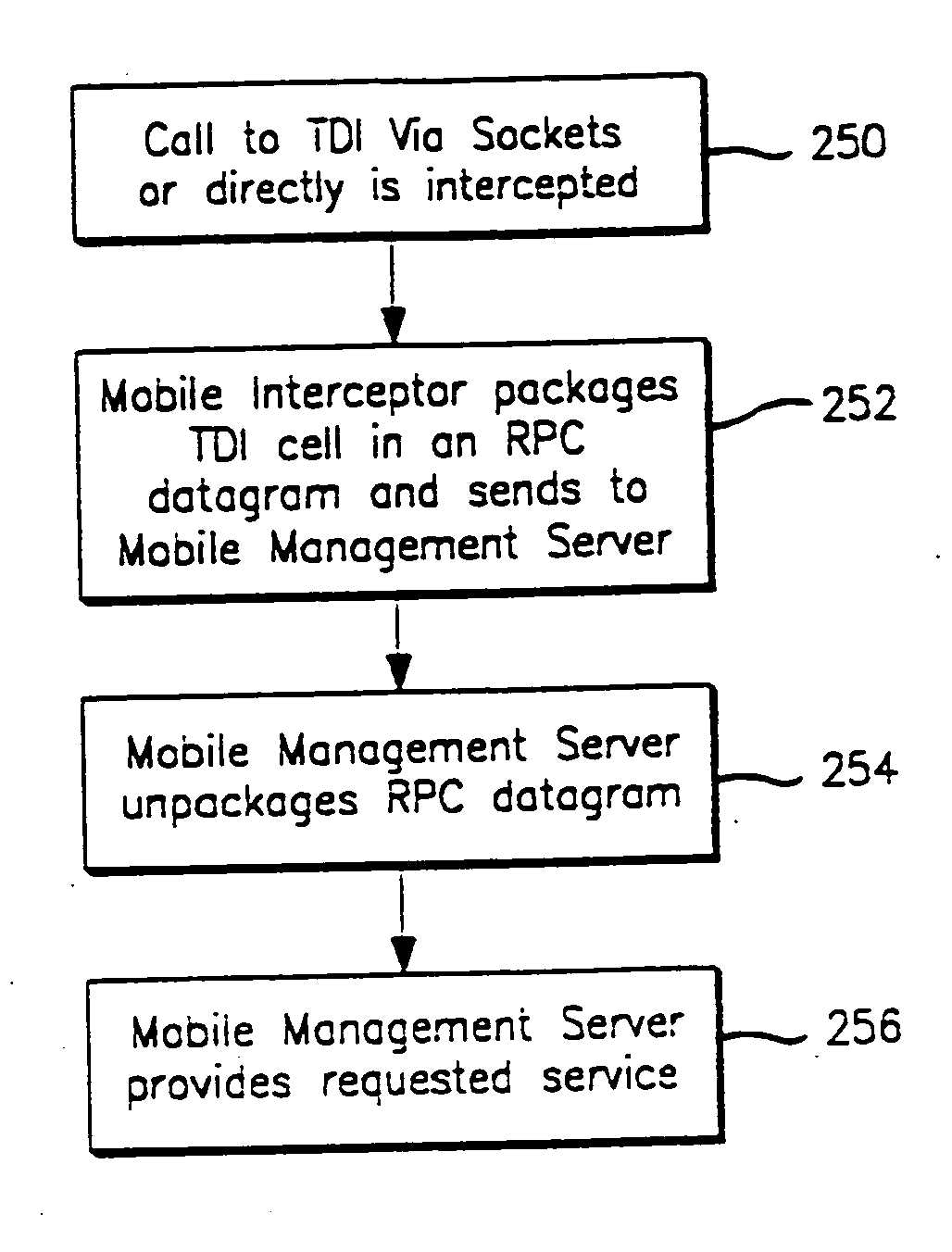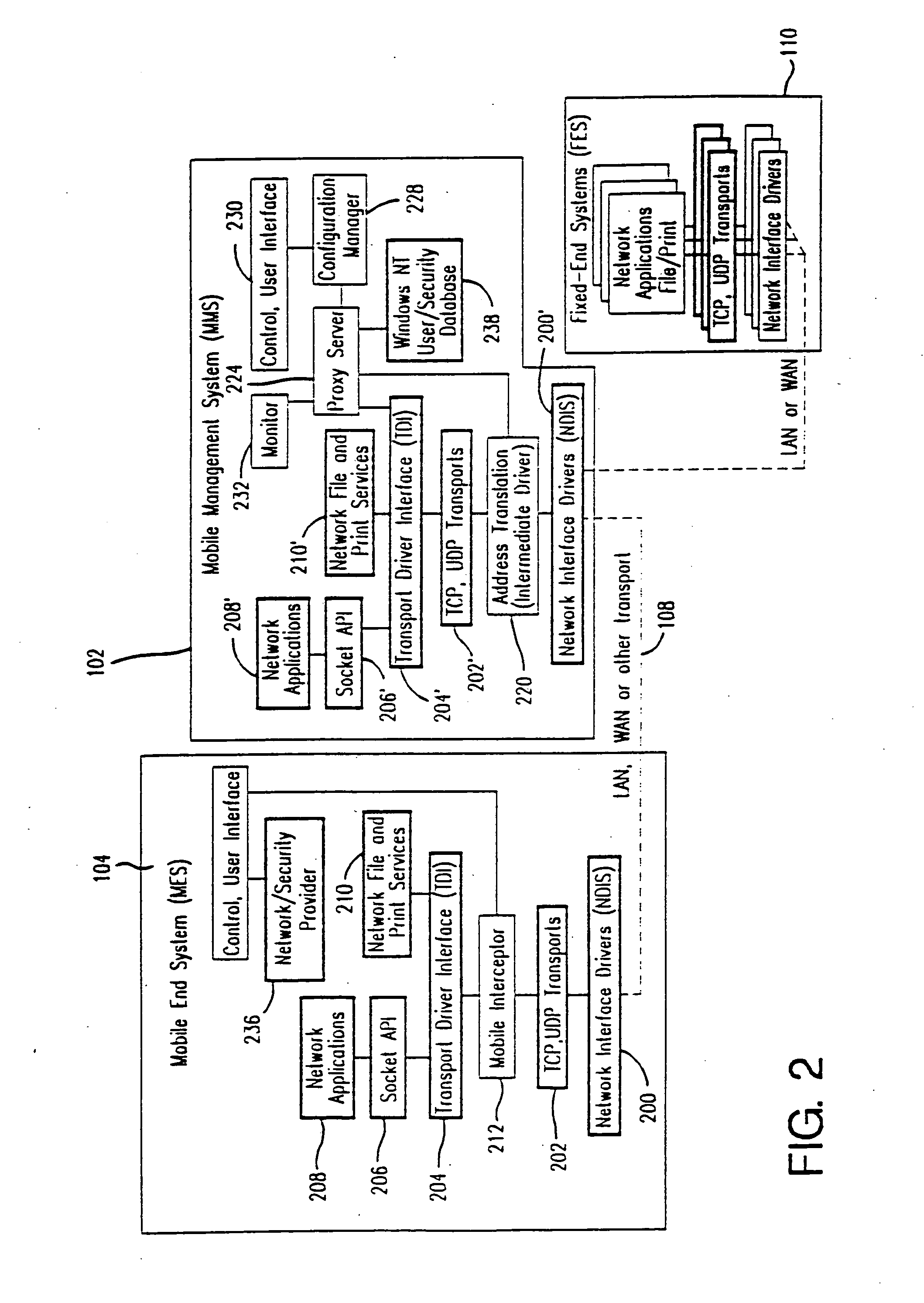Method and apparatus for providing mobile and other intermittent connectivity in a computing environment
a computing environment and mobile technology, applied in the field of networked computing devices, can solve the problems of limited bandwidth, slow performance over these network technologies, and difficulty for information managers, and achieve the effect of reducing costs, sacrificing reliability or centralized managemen
- Summary
- Abstract
- Description
- Claims
- Application Information
AI Technical Summary
Benefits of technology
Problems solved by technology
Method used
Image
Examples
example work
Flow
[0241] Work is requested by local clients through the Internet Mobility ProtocolRequestWork( ) function. Once the work is validated and placed on the global work queue, the Internet Mobility ProtocolWorkQueueEligible( ) function is invoked. If in a threaded environment, the Internet Mobility Protocol worker thread is signaled (marked eligible) and control is immediately returned to the calling entity. If in a synchronous environment, the global work queue is immediately run to process any work that was requested. Both methods end up executing the Internet Mobility ProtocolProcessWork( ) function. This is the main dispatching function for processing work.
[0242] Since only one thread at a time may be dispatching work from the global queue in the example embodiment, a global semaphore may be used to protect against reentrancy. Private Internet Mobility Protocol work can post work directly to the global work queue instead of using the Internet Mobility ProtocolRequestWork( ) functi...
example connect
and Send Requests
[0254]FIGS. 10A-10C together are a flowchart of example connect and send request logic formed by Internet mobility engine 244. In response to receipt from a command from RPC engine 240, the Internet Mobility Protocol engine 244 determines whether the command is a “connect” request (decision block 602). If it is, engine 244 determines whether connection resources can be allocated (decision block 603). If it is not possible to allocate sufficient connection resources (“no” exit to decision block 603), engine 244 declares an error (block 603a) and returns. Otherwise, engine 244 performs a state configuration process in preparation for handling the connect request (block 603b).
[0255] For connect and other requests, engine 244 queues the connect or send request and signals a global event before return to the calling application (block 604).
[0256] To dispatch a connect or send request from the Internet Mobility Protocol global request queue, engine 244 first determines ...
example termination
[0259]FIG. 11 is a flowchart of example steps performed by Internet Mobility Protocol engine 244 to terminate a connection. In response to a “terminate connection” request (block 626), the engine queues the request to its global work queue and returns to the calling application (block 626a). The terminate request is eventually dispatched from the Internet Mobility Protocol process global work queue for execution (block 627). Engine 244 examines the terminate request and determines whether the terminate request should be immediate or graceful (decision block 628). If immediate (“abort” exit to decision block 628), engine 244 immediately aborts the connection (block 629). If graceful (“graceful” exit to decision block 628), engine 244 declares a “state close” state (block 628a), and sends an Internet Mobility Protocol “Mortis” frame (block 630) to indicate to the peer that the connection is to close. Engine 244 then declares a “Mortis” state (block 630a) and starts the retransmit time...
PUM
 Login to View More
Login to View More Abstract
Description
Claims
Application Information
 Login to View More
Login to View More - R&D
- Intellectual Property
- Life Sciences
- Materials
- Tech Scout
- Unparalleled Data Quality
- Higher Quality Content
- 60% Fewer Hallucinations
Browse by: Latest US Patents, China's latest patents, Technical Efficacy Thesaurus, Application Domain, Technology Topic, Popular Technical Reports.
© 2025 PatSnap. All rights reserved.Legal|Privacy policy|Modern Slavery Act Transparency Statement|Sitemap|About US| Contact US: help@patsnap.com



